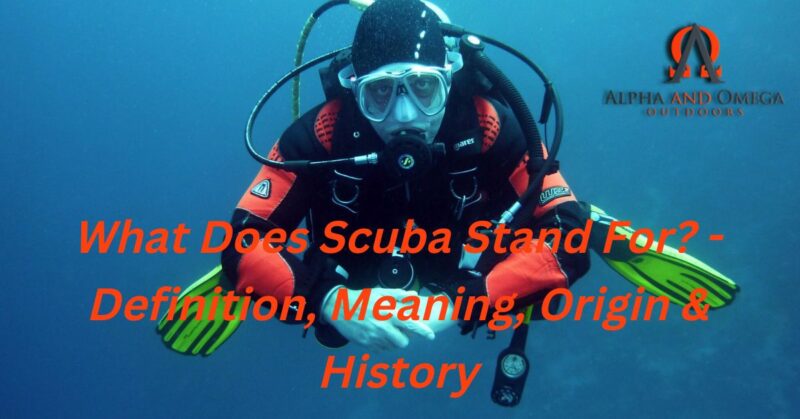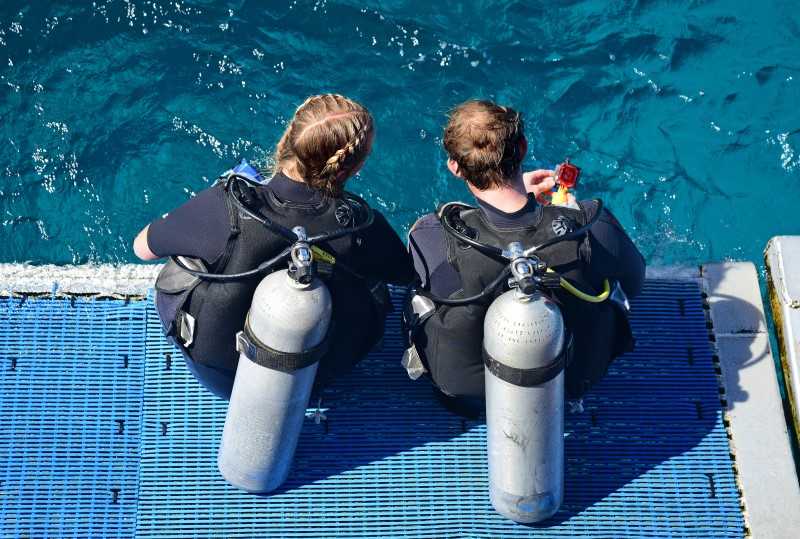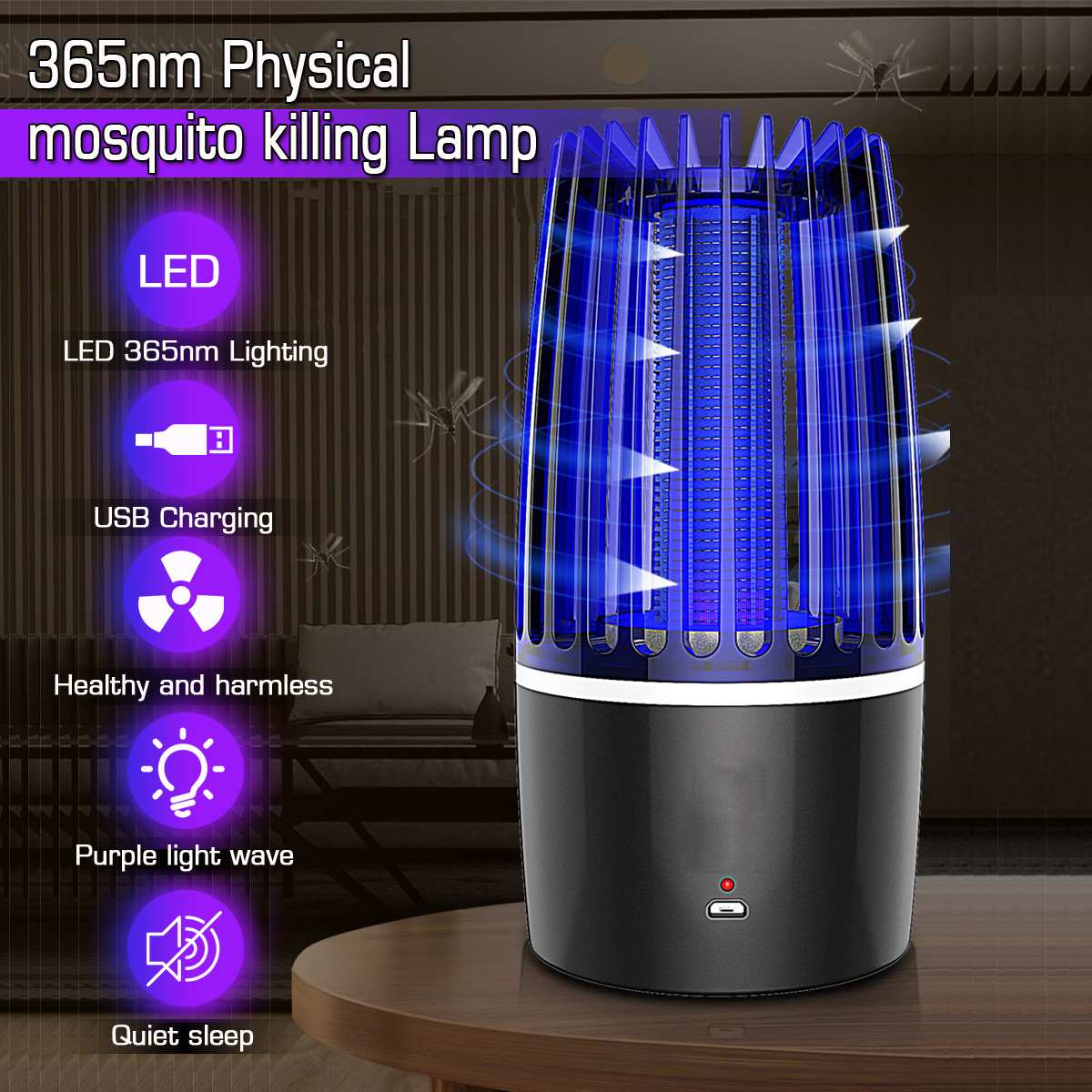
What does SCUBA stand for? The acronym SCUBA stands for Self-Contained Underwater Breathing Apparatus. It has generally been used to refer to equipment used to allow divers to explore the underwater environment without having to rely on air supply from the surface. The apparatus consists of a full face mask, a snorkel or regulator, a buoyancy control device (BCD), fins, and a tank of compressed air.
More recently, the word “scuba” generally refers to the type of diving, not the equipment. Scuba divers use their equipment to explore the underwater world and experience the beauty of nature that lies beneath the surface.
In this article, I will take a look at the history of scuba diving and how it has evolved over the years. I will also discuss the different types of equipment used by divers, as well as the various safety procedures used while diving. Finally, I will explore some of the regulations put in place by governing bodies such as PADI and NAUI to ensure safe and responsible scuba diving.
Table of Contents
- What Does SCUBA Mean In Diving?
- The History Of SCUBA
- What Does SCUBA Stand For? – Types Of SCUBA Gear
- SCUBA Safety Procedures
- How Dangerous Is SCUBA Diving?
- Final Thoughts – What Does SCUBA Stand For?
- Frequently Asked Questions – What Does SCUBA Stand For?
What Does SCUBA Mean In Diving?
The word “scuba” is the first thing we think of when speaking about the sport of diving, and there is a reason for that. Scuba diving is one of the most popular types of diving. According to different sources, there are about 6 million active scuba divers worldwide.
But what does scuba mean in diving? As was mentioned above, this word stands for Self-Contained Underwater Breathing Apparatus. You may find different definitions of scuba, such as “a portable free-swimming breathing device that consists of a mouthpiece connected by hoses to one or more compressed air tanks strapped on the back” or “an apparatus for breathing underwater that uses a transportable supply of compressed gas (usually air) supplied at a controlled pressure.”
While these descriptions may not sound impressive, this device is an essential part of diving equipment, as it allows you to spend many hours underwater.
The History Of SCUBA
The practice of “SCUBA” diving has a long history.
Who Was the First Person to SCUBA Dive?

Most divers know that modern scuba diving is largely attributed to Emile Gagnan and Jacques-Yves Cousteau. But were they the first people to scuba dive? The history of scuba diving goes back to the ancient Greeks. For this reason, determining who was the first scuba diver is a pretty difficult task.
- According to Aristotle in his Problematum, diving was quite common among sea-sponge pickers. They used a bell filled with air to dive to the bottom of the Mediterranean sea. Besides, the diving bell was also used by Alexander the Great. Although diving bells had numerous limitations, they have been used for many centuries.
- In 1772, a French inventor Sieur Freminet invented self-contained diving equipment comparable to the modern scuba set. His scuba apparatus was able to recycle the air inside the diving bell. Freminet wore a copper helmet along with a copper air tank and dived successfully for several minutes at a depth of about fifty feet. Nevertheless, his invention had serious shortcomings. Freminet passed away due to the lack of oxygen after spending only 20 minutes underwater.
- In 1825, William James developed the original open-circuit scuba system. According to diving historians, it was the first device that vented exhaled air into the water instead of recirculating it. Still, even though he patented his invention, nobody ever used it in the water.
- In 1880, another British diver, Alexander Lambert, successfully used Henry Fleuss’s rebreathing system for an underwater construction project. This device allowed him to remain below the surface for up to three hours. For this reason, some enthusiasts consider Lambert to be the first scuba diver in history.
Modern SCUBA
- Still, most diving historians might not agree with this point of view. They argue that Emile Gagnan and Jacques Cousteau were the first persons who invented and developed the Aqua-Lung – the diving system we use today. According to them, these two gentlemen are the ones to be considered the first scuba divers.
Although it is almost impossible to determine exactly who was the first person to scuba dive, each of the inventors mentioned above helped make modern diving a reality.
Why Was SCUBA Diving Invented?
Previously, the only way to explore the sea was by using helmeted diving suits or diving bells that were expensive and bulky. Besides, divers had to use air hoses connected to the surface source to breathe. It significantly limited their mobility and maximum range.
Jacques Cousteau was searching for a new device that would be able to overcome these limitations. For this reason, he teamed with another french inventor – Emile Gagnan. Combining Cousteau’s practical knowledge with Gagnan’s engineering experience, they created a demand-flow regulator that adjusted to the surrounding pressure and controlled the air supply.
In 1946, Cousteau introduced to the world the Aqualung – a new invention that used a demand valve system to provide a diver with air. It has made scuba diving safe and relatively cheap, providing opportunities for engineers, scientists, and diving enthusiasts to discover the underwater world.
First Use Of The Word SCUBA
Christian J. Lambertsen is widely credited with inventing the term “SCUBA” (Self-Contained Underwater Breathing Apparatus). He coined the word in 1952, while he was researching ways to enable military personnel to breathe underwater.
He subsequently developed the Lambertsen Amphibious Respiratory Unit which was the first open-circuit system designed for military use.
The word quickly gained popularity and is now commonly used when referring to diving in general.
What Does SCUBA Stand For? – Types Of SCUBA Gear
This gear is used for underwater diving. This breathing apparatus provides a diver with air or a breathing gas mixture at ambient pressure. Strictly speaking, scuba is a piece of diving equipment used for supplying air to the diver. It also includes a harness, a buoyancy compensator, or a jacket as well as other accessories and instruments.
In a looser sense, “scuba” refers to any diving equipment used for scuba diving, though it would be more accurate to use the terms scuba gear or scuba equipment.

Scuba is the most common underwater breathing system among recreational divers. It is also used by professional divers when they cannot use a surface-supplied diving system. Scuba gives the advantages of horizontal range and mobility far beyond the reach of any surface-supplied diving equipment (SSDE).
Most diving modes rely either on breathing air supplied under pressure from the surface or on breath-hold. Scuba gear is pretty compact and allows a diver longer underwater endurance than breath-hold and greater freedom of movement than with SSDE, as he carries his source of breathing gas.
There are numerous applications for scuba diving. They include military, public safety, and scientific roles. Nevertheless, surface-supplied diving is more common when it comes to commercial diving.
Scuba diving implements two basic functional systems: rebreather and open-circuit demand.
The Rebreather System
In rebreather scuba, the exhaled gas is recycled, and the carbon dioxide is removed before supplying the diver with breathing gas. Stored gas is provided at ambient pressure through injectors or regulators. Depending on the depth change during the breathing cycle and the design of the rebreather, the system may lose some amount of gas.
The Open-Circuit Demand System
In this type of scuba, the diver uses a diving regulator for each breath to be delivered. The exhaled air is expelled into the environment, lowering the gas pressure from the storage cylinder. When the diver inhales, the pressure in the demand valve decreases, starting the process of air supply.
Although these air supply systems are pretty different, both of them may use multiple mounting configurations to carry the scuba set. They include sling mount, which is popular for stage-drop sets, side-mount used for tight cave penetrations, back mount for surface-supplied diving or recreational, and several other non-standard carry systems for specific circumstances.
SCUBA Safety Procedures
In addition to having the proper gear, scuba divers must also adhere to certain safety procedures in order to stay safe while underwater. These include:
- Doing a pre-dive check to make sure all of the equipment is in working order.
- Checking the air pressure in the tank before entering the water.
- Making sure to never dive alone and always have a buddy with you.
- Monitoring the dive time and depth to ensure that you do not stay underwater for too long.
- Being aware of your surroundings and any potential hazards.
- Always following the dive regulations put in place by governing bodies such as PADI and NAUI.
By following these safety procedures, divers can ensure that they have a safe and enjoyable experience.
How Dangerous Is SCUBA Diving?

Diving does involve some danger. The potential risks include arterial air embolism, decompression sickness, and of course drowning. Besides, nitrogen narcosis, which is one of the effects of diving, can contribute to the cause of these problems. Yet, careful preparation and training will help to prevent these problems.
Nitrogen Narcosis
Nitrogen narcosis is a feeling of giddiness or drunkenness you may feel at deeper depths. Although nitrogen narcosis is not damaging to physical health, it can cause a temporary reduction in thinking, motor coordination, and decision-making.
It often leads to poor decisions by the diver that may result in decompression sickness or other troubles. Nitrogen narcosis is one of the reasons why extra training is required for diving beyond 60 feet.
Arterial Air Embolism
An arterial embolism may occur to a diver when bubbles form in his arteries, preventing normal blood flow. This condition is usually caused by damage to the lungs as a result of pressure differences. For instance, if you hold your breath while ascending, the air pressure inside your lungs will increase, causing serious damage to the lungs.
Arterial embolism is rare but preventable through careful diving and proper training.
Decompression Sickness (DCS)
Decompression sickness (DCS) is probably the most common diving-related injury. When a diver breathes compressed air at depth, his body receives additional nitrogen. When he resurfaces, nitrogen bubbles can appear inside his body tissues if they have absorbed too much nitrogen.
This condition is named decompression sickness. DCS causes a lot of pain and can be fatal if not treated.
Drowning
Drowning due to problems with the breathing gas supply is the most immediate risk related to scuba diving. It may be managed by adequate planning, constant monitoring of remaining gas, and provision of emergency air supply provided by the diver’s buddy or carried by the diver himself.
As you can see, scuba diving can be dangerous if you do not follow safety rules. You should not dive unless you have a clean bill of health and have completed a training course from a recognized diving school. Also, it is advisable to consult a doctor if you have any respiratory or cardiac conditions.
Final Thoughts – What Does SCUBA Stand For?
What Does SCUBA Stand For? Scuba stands for Self-Contained Underwater Breathing Apparatus. It is a system of equipment that enables you to breathe underwater and explore the deep sea safely. With proper training and safety procedures, diving can be an enjoyable experience that offers a unique view of the underwater world. So what are you waiting for? Get certified and explore the depths of the ocean. Have fun!
Frequently Asked Questions – What Does SCUBA Stand For?
What does DIVE mean?
DIVE stands for Diving Information and Verification of Education, which is a program used to certify scuba divers.
What does BODO stand for?
BODO stands for “Basic Open Water Diver”, which is a certification level that ensures basic competence in scuba diving.
What does PADI stand for?
PADI stands for Professional Association of Diving Instructors and is a globally recognized organization that provides scuba certifications.
What does NAUI stand for?
NAUI stands for National Association of Underwater Instructors and is another organization that provides scuba certifications.
What does SSI stand for?
SSI stands for Scuba Schools International, which also provides certifications.
What does CMAS stand for?
CMAS stands for Confédération Mondiale des Activités Subaquatiques and is a non-profit organization that provides certifications.
What does IANTD stand for?
IANTD stands for International Association of Nitrox & Technical Divers, which is an organization that provides technical diving and nitrox certification programs.
What is the most important safety rule in scuba diving?
The most important safety rule in scuba diving is to always dive with a buddy. Diving with a partner will help you to stay safe and also provide assistance if an emergency arises.
Are there any special skills needed for scuba diving?
Yes, there are several important skills needed for scuba diving. These include buoyancy control, being able to navigate underwater, and being able to identify signs of distress. Additionally, divers must be able to use safety equipment properly and understand what the different dive signals mean. Lastly, divers should be familiar with the local dive laws and regulations before undertaking any dives.
What is the deepest a scuba diver can go?
The deepest a scuba diver can go is determined by their training and certification level. Generally, recreational divers are not allowed to dive deeper than 130ft (40 meters). Technical divers, however, can go much deeper depending on their certification level.


